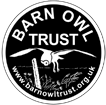In 2023, we began our current research project ultimately looking to answer the question:
“How likely is it that a newly erected Barn Owl nestbox will be used by a Barn Owl, or other species?”
The project involves our Conservation Team installing a total of 90 new nestboxes over 3 winters and monitoring how quickly, if at all, they become occupied and by what species. At the time of installation, we are noting down variables, such as height, aspect, and pre-existing evidence of Barn Owls, then following up the installations with annual summer monitoring for 3 years. During our summer checks (which fall within the typical Barn Owl breeding period), we are looking for evidence of use by any species and we are also surveying the land around the nestbox, noting the land use and habitat types, in order to explore how habitat may influence nesting. Although we have been guided by strong anecdotal evidence for many years, resulting in lots of nestbox successes, our hope is that the data we collect might tell us more solidly the factors that help successfully attract Barn Owls.
We already monitor around 90 nest sites annually across Devon, so we will be surveying these too and using them as our basis for comparison.
Our second winter of nestbox installations for our project is well underway. We are flying along, having already installed 23 out of the allotted 30 by mid-December 2024. We will cease installations by the end of February and then return to check them in the summer.
Out of our first year of nestboxes erected in winter 2023/24, our summer checks returned 3 Barn Owl nests, 8 Stock Dove nests, 1 Jackdaw nests and 2 Squirrel dreys. Unfortunately, 14 of the boxes were still completely empty, so it will be interesting to return to them a year on next summer and see whether anything has found them yet!
As the project is rolling, and boxes are going up in cohorts of 30 each year, we won’t be writing up our overall findings for a while yet…. All being well, our final summer of monitoring will be in 2028!
